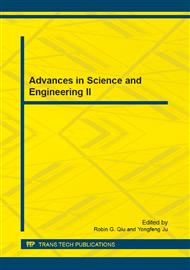p.347
p.353
p.359
p.365
p.369
p.375
p.380
p.389
p.396
Design and Implementation of Full-Text Retrieval System for People’s Daily Annotated Corpus
Abstract:
In this paper, we have designed and realized a efficient full-text retrieval system for the basic annotation People's Daily Corpus based on the inverted index technology. According to the characteristics of the basic annotation People’s Daily Corpus data, we have analyzed the methods and strategies of system implementing thoroughly. On the basis of comparing the various schemes, we have put forward to the three levels index structure of Chinese character, word and address set, and given the design approach of each level index dictionary structure. After converting the unstructured People’s Daily corpus into index structured data, we realized the full-text search algorithm correspond to the proposed index structure. Experimental results show that the proposed search algorithm has achieved the target of "ten millions Chinese characters, response in a second", improved the speed of the People's Daily Corpus full-text search.
Info:
Periodical:
Pages:
369-374
Citation:
Online since:
October 2011
Authors:
Price:
Сopyright:
© 2012 Trans Tech Publications Ltd. All Rights Reserved
Share:
Citation:


